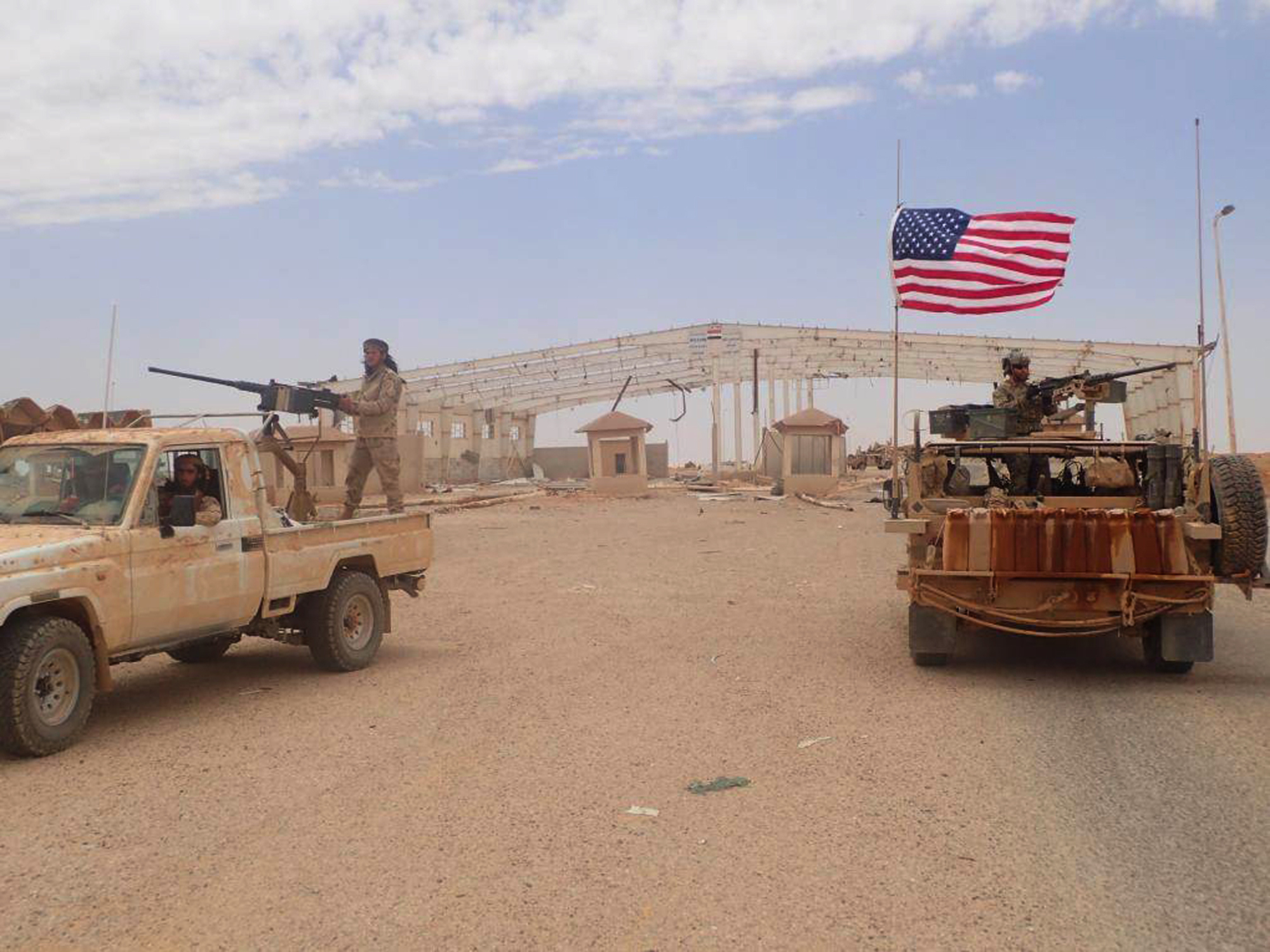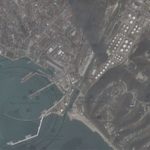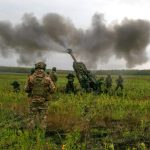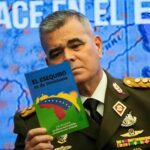Situation Report – Starting from the unconfirmed reports that have surfaced today that a month ago, the Trump administration has decided to cancel the CIA covert program through which various Syrian Rebel groups were provided with weapons, ammo and aid in order to fight the regime of Bashar al-Assad. Reportedly, the decision has been taken after President Donald Trump consulted with National Security Advisor MacMaster and CIA Director Mike Pompeo. The story is taken by the public as another piece of the ‘Russian collusion’ puzzle and creates additional pressure on the White House and the Campaign team that is now under scrutiny for its undeclared discussions with individuals from Russia. However, this memo will express the background and incentives of the covert program in order to clarify the situation from a technical point of view: retrospective summary, consequences/ benefits and it’s overall projection.
The first things which should be clarified through the complex and entangled U.S. covert plans in Syria is that there were three such initiatives, the early one, run by the Central Intelligence Agency (CIA) included the transfer of weapons, ammo and aid to the Rebels fighting Assad, and two sanctioned by the Department of Defense (Pentagon) that foresaw an ambitious but failed approach of training 5,000 vetted and hand-picked Rebel fighters per year, and the successful revamped version, through which the Syrian Democratic Forces (SDF) were born, set exclusively in combating ISIS, benefiting from U.S. air support . The one reported to have been canceled by the Trump administration is the CIA-sanctioned one.
Summary
The program has been theorized by the Obama Administration in 2013 when aiding Syrian Rebels was a more practical, credible and efficient solution that would be now. The context of 2013-2014 Syria War is fully opposite to today’s situation. Just until mid-2015, the Assad government had yet to receive direct military support from the Kremlin while Iranian aid consisted mostly in weapons, ammo and a small contingency of Shi’a militias from Iraq, leaving the weary Syrian Arab Army opened to defections and an overwhelming assaults of various opposition forces. Following Washington’s policy throughout the Arab Spring and reflecting on its resolve to topple Muammar Gaddafi’s government in Libya through an extensive air campaign, the context was there for a regime change and state building option in Damascus. But as the situation in Syria grew intensively complex and given the commitment of ‘no boots on the ground’ from the Obama administration, the American strategists faced a difficult task ahead. Moreover, the configuration of the combatant forces was largely ambiguous, and their ideologies or allegiance were at least blurred, bringing an additional layer of difficulty in identifying a compatible native force.
In 2013 the White House authorized the Central Intelligence Agency (CIA) to arm selected Syrian Rebel groups against the forces loyal to Bashar al-Assad. The beginnings of the initative four years ago were officially a secret, authorized by President Barack Obama through a “finding” that permitted the C.I.A. to conduct a deniable program through-which opposition fighters received weapons, ammo and aid, fueling the war against Assad while not committing the U.S. politically against a single-handed overthrow of the dictatorial regime. The Central Intelligence Agency (CIA) identified friendly assets that would act as liaisons for the United States and which received a constant flow of logistics through Turkey and Jordan, both countries that supported such programs and had similar arrangements with own assets themselves. But given the rise of ISIS, that threatened Euro-Atlantic security interests, and the overall polarization of the opposition camp, that left merely a few ‘moderate’ Rebel groups in play in stark contrast to the powerful, well funded and armed Salafists or political islamists, Washington’s priorities changed.
In this context, the Department of Defense was authorized to develop a ‘train and equip’ program that would build a new opposition army from scratch that will focus on combating ISIS and other terrorist groups.
In 2014, Congress for the first time provided the President with authority and funds to overtly train and lethally equip vetted members of the Syrian opposition for select purposes. These objectives include supporting U.S. efforts to combat the Islamic State and other terrorist organizations in Syria. The FY2015 National Defense Authorization Act (NDAA, P.L. 113-291) and FY2015 Consolidated and Further Continuing Apropriations Act, 2015 (P.L. 113-235) provided that up to $500 million could be transferred from the newly-established Counterterrorism Partnerships Fund (CTPF) to train and equip such native forces. Therefore, the covert program did not just refer to training and aiding indigenous elements, but also to undertake the human resources pre-selected, through a strict screening process that would eventually leave only the most ‘moderate’ fighters, in terms of ideology, to receive Washington’s ‘carepack’. This incentive produced two consequences: the recruitment of a small contingency of rebels, and a time-spawn until the force was operational and battle-ready. The training took place on the territory of two regional allies, Turkey and Jordan, which were also the staging areas of detachement of deployment until these new forces set-up forward operating bases (FOBs) in Syria by themselves.
The plan was to train 5,000 such troops, per year. On June 2015, Defense Secretary Ashton Carter’s testimony in front of the Senate’s Armed Services Committee expressed that at that time, only 60 Syrian Rebel fighters have been trained. As expressed above, the vetting and screening process makes it extremely difficult to identify compatible peers.
On July 2015, the first batch of Syrian Rebels trained called ‘Division 30’ numbered around 200 fighters of Sunni Turkmen or Arabic background, were deployed over the Turkish border. As soon as they steeped in Syria they were violently ambushed by Jabhat al-Nusra, the Syrian affiliate of al-Qaeda. As a result, their weapons were stolen, some of them got killed and their field commander was kidnapped. As Asmed Shaheed, an Al-Nusra jihadi that posted a photo with his recently capture M-16, many boasted only about their ‘war spoils’ online. The U.S. air cover failed to protect the Rebels, as a retaliatory strike only came the day after. The operational disaster draw comparison between the ‘Divison 30’ episode the massacre of the ‘Bay of Pigs’, Cuba 1961.
Due to its complete failure and its inefficient spending of 500$ million of the taxpayer’s money, the program was suspended in October 2015. This was also regarded at that time as a sign of weakness towards the recent intervention of Russia’s aerospatial forces and expeditionary units in support of Bashar al-Assad. In reality, the suspension of the program was followed by a rational course of events.
In 2016, the White House asked Congress for an additional ‘train and equip’ program, enforced by the same Department of Defense.“This is part of our adjustments to the train and equip program built on prior lessons learned,” said Col. Steve Warren, spokesman for the U.S.-led military coalition in Baghdad. Starting from early 2015, The United States managed to gain a major ally, the ‘Euphrates Volcano’ – a joint war room formed by Kurdish militias as YPG/ YPJ and several Sunni Arab groups in order to coordinate in their fight against ISIS in Tel Abyad after relieving the siege of Kobane. By late-2015, these groups united their efforts in a framework called ‘Syrian Democratic Forces’ (SDF). Both DoD and the White House believed that this was a group that deserved their support in order to combat ISIS, given their eficiency and numbers, already proven in previous battle in the region, so that in June 2016 the ‘Train and Equip’ Program was rebooted. U.S. Special Operators, present in Syria since 2015, continued their efforts to train and equip them from Jordan and northern Syria. These now embedded forces would also act as a compact outsourced infantry of the Pentagon’s air campaign.
Quality-test
Through this US-SDF partnership, ISIS has lost every battle against them in the past 2 years. The terrorist saw their caliphate shrink into a besieged enclave ‘capital’ of Raqqa, and sparsely spread in villages and towns around the Euphrates Valley. This cooperation has also given the US the chance to build military bases in northern Syria, the largest ones being in Sarrin, near Kobani and Rmelah, near Qamishli. But for reasons of operational secrecy, Transylvania Intelligence chose not to disclose their complete locations.
Just to clarify as an end note: the Syrian Democratic Forces (SDF) and the entire anti-ISIS effort has nothing to do with the CIA cover program that was canceled.
However, the Rebels have been sequentially losing ground in face of the Loyalist offensives, and became dominated by the Salafist segment, as the ex-al-Nusra, now Hayat Tahrir al-Sham (HTS), Islamic Turkistan Party, Ahrar ah-Sham or Jaysh al-Islam, that have share the Idlib governorate into sectors of influence, setting checkpoints, imposing their own social judiciary based on Sharia Law and even fighting each other – as the current Ahrar vs. HTS clash in east Idlib. Other small pockets of Rebels still survive around Damascus in East Ghouta, Da’ara and Quneitra, but are critically besieged and weakened under a constant rain of barrel bombs and mechanized attacks.
The Rebels that Matter:
1. The only part were Rebel fighters that bear a strategic importance to American security interests is the desert area around the tri-border of Syria-Iraq-Jordan, notably around the al-Tanf crossing. The area was seized in March 2017 by Sunni Arab Rebels from the Amman-based Meghawir al-Thawra group, trained, armed and assisted by U.S. forces in camps built in Jordan. The role of this American-Rebel contingency on the border is to block Iran’s geopolitical gamble and deny Tehran a ground supply line for Hezbollah and Shi’a militias operating in Syria. In early June, given the relative cease-fire produced by the Astana Agreements, Loyalist forces spearheaded an operation through the Syrian desert and captured the territory north of al-Tanf, therefor blocking the frontline that the al-Tanf based Rebels had with ISIS, consequently denying their official purpose of their presence. Some strategist could consider that the border territory is now lost to Iran, due to the blockade imposed north of al-Tanf and because the Syrian Democratic Forces firstly need to liberate Raqqa before commencing on the Euphrates Valley and on the border – which could take too long, time in which the Syrians and Iranians could have already secured the frontier. It is also publicly known that President Trump and Putin negotiated a truce, a cease-fire between Loyalist forces and Rebels in that area. Which could equal in an abandonment of support for the al-Tanf contingency, that just months ago, was defended by bombing the Iraqi Shi’a militias backed by Iran, and that were threatening the local U.S. presence.

A contingent of Sunni Arab Rebels and U.S. forces at the al-Tanf border checkpoint to Iraq.
However, it is not clear whether the southern Rebels are part of the ‘Train and Equip’-Pentagon sanctioned program, or of the CIA’s covert action?
(a) In the case of the later, and their presence or functionality are affected by the cancellation of the CIA’s covert program, than the White House is making a serious mistake, with potential strategic dangers.
(b) On the other hand, the Jordanian-based Rebels have been used to fight ISIS, notably on the Syrian-Iraqi border and hopefully through Abu Kamal, Mayadin the the Euphrates Valley, and benefited from a close coordination with the U.S. Special Operators. It is highly possible that given the level of support and the stated objectives, these Rebels were trained under the Pentagon-backed ‘Train and Equip’ Program, thus being sheltered from any potential damage that the recent decision could have projected. Whereas the CIA convert operation only provided weapons and ammo to Rebels notably fighting Assad.
2. The Rebels from Quneitra also have a distinctive feature. They act as buffer elements between Israel and Hezbollah, that operates near-by. A defeat for the Rebels based there could trigger an Israeli intervention in the conflict and could upper the demands of Jerusalem for ‘safe-zone’ in the area, similar to what Turkey did in northern Aleppo governorate, even through direct action. A weakening of the Rebels fighting in the area could expose Israel’s Golan Heights to Iran’s proxy’s. However, Israel unveiled it’s massive humanitarian operation, code-named Operation ‘Good Neighbor’ through which the IDF provides health care, food and fuel for the Syrians.
Key Judgement:
- Decision to end CIA covert program was most likely taken from a technical point of view, but could have been capitalized in the Trump-Putin negotiations on Syria in Hamburg.
- In a stark paradox, the Trump administration campaigned that it will renounce state building and regime change activities. Translated in Syria, this is a result to the fact that since 2013, there is no viable and legitimate alternative to Assad at the moment, nor there is one proposed by the Turkey-based Syrian National Coalition, not even as an interim figure; and as the Rebels are on the imminent brink of defeat, democratic elections are no longer a viable or possible option.
- The impact of the decision to cancel the CIA covert program is currently difficult to asses. The framework has been loose in its technicalities and details, dully in order to arm Syrian Rebels wherever and whenever needed. Moreover, given the clandestine and potentially classified nature of the program, it is highly unlikely to perceive the effects on the short-term.
- Syrian Rebels from Maghawir al-Thawra stationed in al-Tanf to guard the border crossing from Iranian elements and launch an offensive against ISIS, are most probably funded and protected under the Department of Defense framework.
- Rebel factions from the radical ‘safe haven’ of Idlib, the de facto buffer zone of Quneitra, Da’ara, or the suburbs of Damascus as East Ghouta, could potentially face significant challenges given the cancellation. However, given Israel’s escalation of aid (even publicly) to Syrians (even under the auspice of humanitarian aid) and taking into consideration that most of these Rebel groups have been formed and initially funded by the rich Gulf States, it is also safe to assume that the financial gap could easily be filled by the other external backers.
- On the other hand, the Rebels based in Jordan have been promoted as being
- In contrast, the cease-fire in south-western Syria brokered between Trump and Putin is difficult to interpret as a strategic action. One significant fear is that the White House won’t fall for Moscow’s apparently but questionable good-will to appease its concerns in regards to Iranian activities on the border. Notably given the lack of leverage that Russia has above Iran in the first place.
- Abandoning the support for anti-Assad efforts of the Syrian Rebels could make sense from a technical point of view given the current context, however, it does not hold significant benefits for the U.S., other than facilitating a closer cooperation with the Loyalist Coalition, and implicitly, with Russia.
- The cancellation of this program also strips the White House from a low-to-medium leverage over the Assad regime, which should have been kept.
Briefing is a short-to-medium assessment that presents a sharp overview of a recently occurring event with the objective of providing timely information with additional comments, rather than a comprehensive in-depth analysis. Such a paper does not regularly exceed 1,100 words.
Founder of T-Intelligence. OSINT analyst & instructor, with experience in defense intelligence (private sector), armed conflicts, and geopolitical flashpoints.





